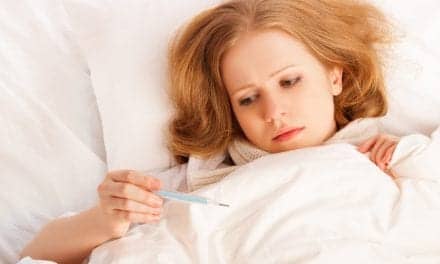A series of studies evaluating the relationship between shift work, sleep disorders, and a man’s urologic health was presented during the 112th Annual Meeting of the American Urological Association (AUA). Howard L. Adler, MD, clinical associate professor of urology and medical director of the prostate care program at Stony Brook Medicine, Stony Brook, NY, moderated the session.
Shift work is known for having unique demands that set it apart from other jobs with traditional daytime working hours. It is also known for having such benefits as better pay or the convenience of not needing child care; however, new studies show the downside to men who regularly work hours outside of a 7 AM to 6 PM workday may include an increased risk of hypogonadal or low-T symptoms, altered semen parameters (eg, sperm count, motility), and increased lower urinary tract symptoms (LUTS).
Study: Shift Workers with Shift Work Sleep Disorder Have Increased Lower Urinary Tract Symptoms (#MP13-12)
Previous studies suggest non-standard male shift workers have an increased risk of lower urinary tract symptoms (LUTS), which can include frequency or urgency of urination, reduced urine flow, painful urination, or a sensation of incomplete emptying. They also suggest these workers are at an increased risk for developing shift work sleep disorder (SWSD), a primary circadian rhythm disorder that disrupts the body’s internal clock. Utilizing questionnaires from men who presented to a single andrology clinic between July 2014 and September 2016, researchers set out to examine the association between SWSD and LUTS in shift workers. The study population included 2,487 men, of whom 37% were diagnosed with SWSD. Each participant’s work schedule, SWSD risk, and LUTS (International Prostate Symptom Score (IPSS)) were examined. The impact of non-standard shift work and SWSD on IPSS score was also assessed using analysis of variance (ANOVA) and linear regression.
Results showed:
- Shift workers diagnosed with SWSD have worse LUTS than those without SWSD.
- Poor sleep habits, rather than shift work itself, contribute to worse LUTS.
- Modifying work and sleep schedules may reduce risk for SWSD and subsequent LUTS.
Study: Increased Risk of Hypogonadal Symptoms in Shift Workers with Shift Work Sleep Disorder (#MP91-06)
Men with hypogonadism have low testosterone levels accompanied by physical symptoms such as erectile dysfunction, decreased muscle mass, low sex drive, and trouble sleeping. In an effort to determine whether a relationship exists between non-standard shift work and hypogonadal symptoms, researchers examined data from nearly 2,500 men who were patients at an andrology clinic between July 2014 and September 2016. Seven hundred sixty-six men worked non-standard shifts, and 282 were diagnosed with SWSD. The men completed questionnaires about their shift work schedule, SWSD risk, and hypogonadal symptoms (Androgen Deficiency in the Aging Male (qADAM) questionnaire). The impact of non-standard shift work and SWSD on responses to qADAM was then assessed utilizing ANOVA and linear regression.
Results showed:
- Shift workers with SWSD have lower testosterone levels and worse hypogonadal symptoms than daytime workers.
- Poor sleep habits caused by SWSD may contribute to more severe hypogonadal symptoms in non-standard shift workers.
- SWSD was independently associated with lower testosterone levels when controlling for age, comorbidities, and history of testosterone supplementation.
Study: Shift Work is Associated with Altered Semen Parameters in Infertile Men (#: PD13-08)
Recognizing shift work negatively impacts circadian rhythms and the hypothalamic-pituitary-gonadal (HPG) axis, an integral regulator of spermatogenesis, researchers in Texas set out to study the impact of shift work on semen parameters and reproductive hormones in infertile men. Participants included men who were not able to achieve pregnancy within 12 months, and had no known genetic or obstructive causes of infertility, as well as, men who had fathered a child within the last five years. Nearly 200 men: 75 infertile shift workers, 98 infertile non-shift workers, and 27 fertile controls were compared.
Results showed:
- Sperm density, total motile count (TMC), and testosterone levels were lower in shift workers.
- No differences in semen volume, sperm motility, leutinizing hormone, or follicle stimulating hormone were observed.
- Infertile shift workers have worse semen parameters than non-shift workers, which is consistent with alterations in the HPG axis observed in shift workers.
Study: The Relationship Between Sleep Disorders and Lower Urinary Tract Symptoms: Results from the National Health and Nutrition Examination Survey (NHANES) (#MP13-15)
By examining the NHANES database, researchers sought to investigate the frequency of LUTS in men, with and without such sleep disorders as obstructive sleep apnea and insomnia. Researchers examined the NHANES database over a two-year period and included men ages 18-70 who completed sleep questionnaires in addition to prostate and kidney forms. Physician-diagnosed sleep disorders were self-reported by patients and statistical analyses were used to compare groups.
Results showed:
- Of the 6,158 men who completed the survey questions, 7% reported a sleep disorder.
- Men with sleep disorders, particularly obstructive sleep apnea, have increased nocturia and are more likely to experience daytime LUTS.
- Older age, Caucasian race, elevated BMI, and increased comorbidity score are factors associated with an increased risk of LUTS in men with sleep disorders.
- Men with obstructive sleep apnea were more likely to experience bothersome daytime LUTS compared to men with other sleep disorders.
“These findings demonstrate how sleep disruption and shift work can negatively impact a man’s urologic health,” says Adler in a release. “The improved understanding about the role sleep plays in contributing to or worsening lower urinary tract symptoms, male infertility, and low testosterone can lead to more effective diagnosis and treatment options.”



